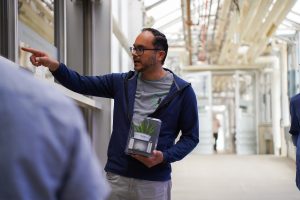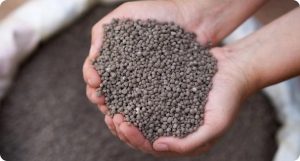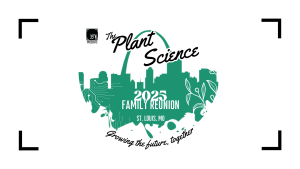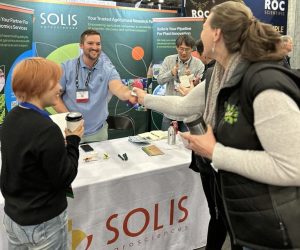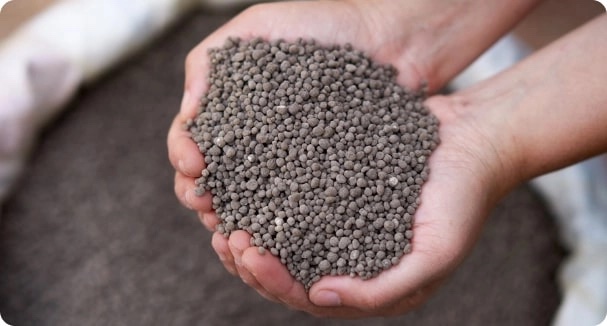
Interview with Tom Snipes, Ostara’s new CEO
You recently moved here from Research Triangle in North Carolina. What are your first impressions of St. Louis as an agtech hub?
I’ve always known St. Louis was a major ag hub—beautiful area, strong entrepreneurial spirit, and home to a lot of major ag companies—but being here full-time has really deepened my appreciation for what’s happening on the ground. The presence of companies like Bayer, the innovation happening around the 39 North campus, and the density of talent and resources make it a uniquely powerful ecosystem for agtech. I was already well aware of how critical the river system is to agriculture, but seeing how seamlessly it integrates into the region’s logistics and infrastructure has reinforced why this is such a strategic place to build a company. On top of that, it’s been energizing to be back in the Midwest—there’s a real pride in ag here, and you feel that connection to the industry in a way that’s hard to replicate elsewhere.
You’ve just taken the helm at Ostara what inspired the leap, and what made this role and city feel like the right next step?
What really inspired the move was the chance to lead a company with technology that I truly believe is revolutionary. I’ve spent my career in ag, and while we’ve seen constant innovation in areas like crop protection and seed—both GMO and non-GMO—there’s been a noticeable lack of progress when it comes to soil nutrition. That’s especially true for phosphorus. Most traditional phosphate fertilizers are only 20 to 30% efficient, which means a lot of waste and missed opportunity. What Ostara has developed is a science-backed solution that’s almost 100% efficient, and that kind of step-change is rare in this industry. It’s not just sustainability-driven; it’s also about helping producers be more effective and more efficient. That’s something I wanted to be a part of.
I’ve also got a background in building companies around nutrient management—I was the first employee at Koch Agronomic Services, where we focused on nitrogen solutions. We even acquired a St. Louis-based company back then, so I’ve been connected to the region for a while. When this opportunity came up with Ostara, it felt like a natural next step. The technology is there, the mission is clear, and the impact potential is huge. Getting to lead the team at this inflection point was something I couldn’t pass up.
Our team at Ostara is around 60 to 65 people, including our plant operations staff. The majority are based in St. Louis, with a few members—mostly on the commercial side—working out in the field. St. Louis is the perfect home for us. People don’t always realize how entrepreneurial this city is, or how strong the agtech ecosystem has become. It’s also incredibly well-positioned from a logistics standpoint—the Mississippi River is a major asset for moving corn, soybeans, fertilizer—you name it. Our plant is co-located on a site with Oakley Fertilizer, right on the river, which gives us great access to key markets in the South. I’ve spent time in other ag hubs like Raleigh, but St. Louis has a unique mix of infrastructure, talent, and history that makes it ideal for what we’re building.
You’ve worked in a variety of ag groups, but mentioned working on nitrogen solutions. What are some of the bigger differences that you see between the two different inputs, and how does that impact commercialization?
If you look at nitrogen over the last 10 to 15 years, you see a heavy adoption of additives to make nitrogen more efficient—mainly because once nitrogen converts to nitrate, especially in the Midwest, you get a lot of leaching and environmental impact, like the hypoxic zone in the Gulf. Potash is a bit of an outlier—it’s not very mobile and doesn’t pose major environmental risks. But phosphorus is really unique: only about 20–30% is available to the plant in the first year, and the rest either leaches out or gets locked up in the soil, becoming inaccessible. That inefficiency is a huge challenge, and it’s where I see Ostara bringing real innovation.
What sets us apart is that we’re not just improving existing inputs with additives—we’re manufacturing a completely new product. Our phosphate stays stable in the soil and only becomes available when it interacts with root exudates, meaning it delivers nutrients exactly when and where the plant needs them. That’s a fundamentally different approach from many others in the space, like microbial or enzyme solutions, which often have mild effects. But introducing a new bulk product like this has its challenges. Unlike smaller-volume inputs, ours requires retailers to make room in their storage systems—literally removing something else to bring us in.
That said, we’ve spent the last few years refining our manufacturing process to make sure we can deliver a consistent, reliable product at scale. Everything from granule strength to how it flows through bulk handling systems had to be engineered right. Now that we’ve nailed down those pieces, we’re starting to see real traction in the market. Adoption is growing, and we’re excited to be at a point where we can be a dependable supplier—and a meaningful alternative—to traditional phosphate fertilizers.
You’ve talked about commercialization of products. What advice would you give agtech entrepreneurs who are confident in their science but struggling to build a viable commercialization strategy?
One of the hardest parts of building any agtech company is figuring out how to scale and commercialize your product. Investors want to know more than just the science—they want to see a clear, realistic plan to bring that product into the market. I’ve seen many startups underestimate how difficult it is to go direct to farmers, or how little they understand about the retail channel. My experience, both at large companies and startups, has taught me that the transition from an idea to a functioning, market-ready company depends on deeply understanding that commercial landscape—and that’s something I try to share whenever I can.
I always tell entrepreneurs: it’s never too early to start engaging with the distribution channel. You need to understand what’s happening at the farm gate well before your product is ready. The ag market is unique—sales typically happen once a year, but your cash burn doesn’t stop. If you miss that planning window (usually by October or November), you’re likely waiting another full season. And even if your technology is impressive, you have to approach retailers and growers with humility and persistence—you’re one small piece of their very busy world. You’ll need to adapt, learn from feedback, and consider creative pathways like partnerships or joint ventures to get your product into the system.
Finally—what’s next? What should the 39 North community be watching for from you and Ostara in the months ahead?
What’s next for us at Ostara is continuing the shift from being seen as an early-stage innovation to becoming a trusted, go-to solution for crop nutrition. Our focus now is on proving consistency—establishing ourselves as a reliable supplier in the market and working with the right partners who understand both the value of efficiency and the broader environmental impact, especially when it comes to water quality. One of the most important things we can do is help shift the conversation around farmers and sustainability. There’s a misconception that growers over-fertilize, but the truth is farmers are incredibly thoughtful stewards—they want to maximize yield without wasting a single ounce of input. Our product fits perfectly within that mindset.
We’re now seeing strong momentum—from moving product by railcar to hearing great feedback from trade shows and customers in the field. But we’re still in that critical growth phase where building awareness is key. There are still plenty of folks—farmers, researchers, retailers—who hear about our technology for the first time and are genuinely surprised by how effective and innovative it is. That tells me there’s a huge opportunity in front of us, and while we don’t have the massive marketing budgets of big crop protection companies, we’re building a grassroots presence that’s growing fast in key regions like the Upper Plains, Mississippi Delta, and the heart of the Corn Belt. We’re fortunate to have long-term investors who believe in the mission, and there’s a real sense of excitement across the company as we take this next step.
Interview conducted on April 3rd by Rishi R. Masalia at The Hub.

